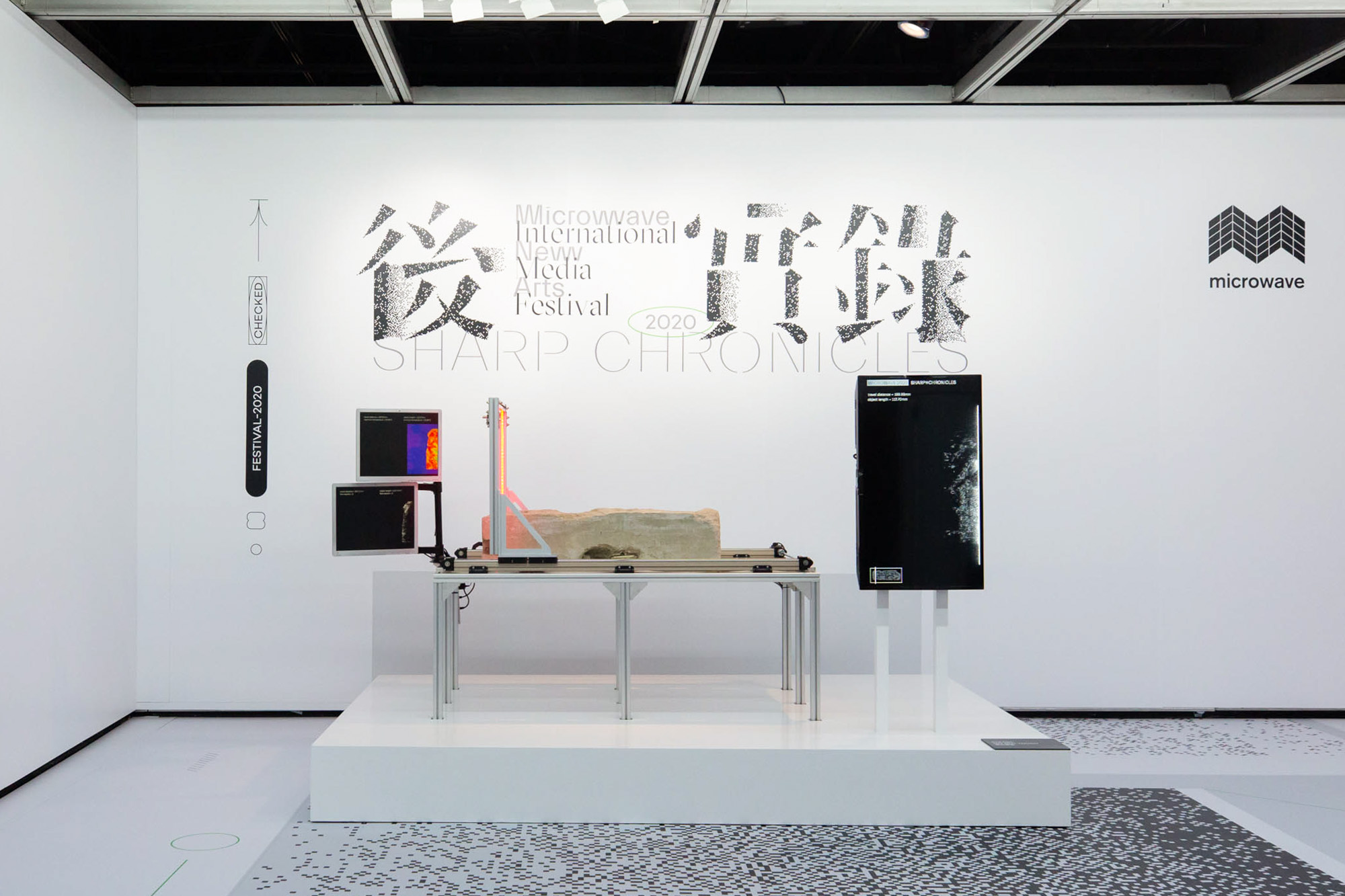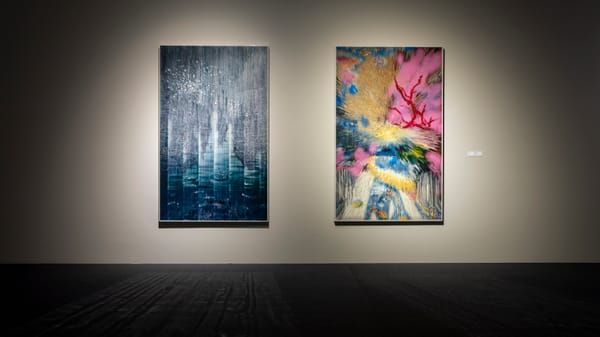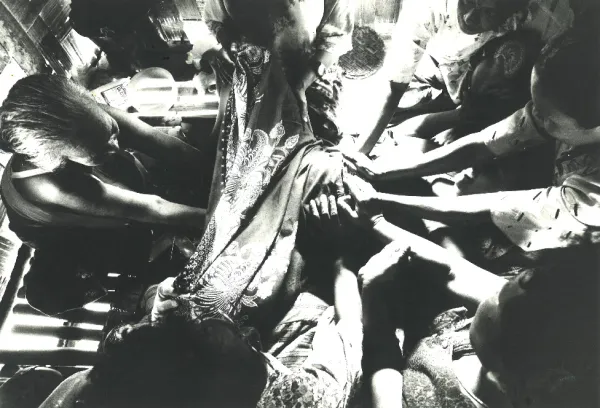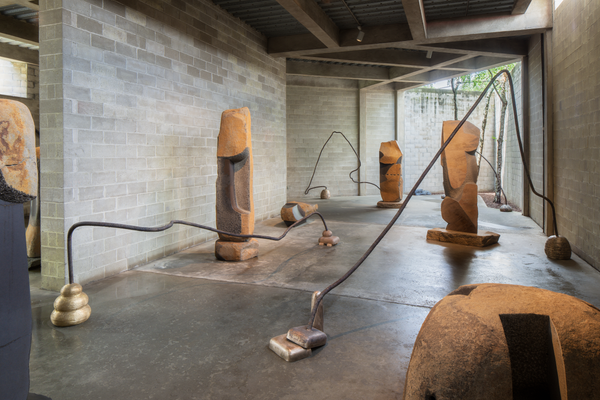Shows
Digital Self-Defense: Microwave International New Media Arts Festival 2020


At the entrance to the main exhibition of the 2020 Microwave International New Media Arts Festival at Hong Kong City Hall was a large rock in a high-tech scanning device that wouldn’t have looked out of place in a Bones (2005–17) episode. As a red beam moves steadily over the sandy slab, thermographic and monochrome digital images of the rock appear on three monitors, along with on-screen annotations on the specimen’s size and “fake reports” flagging dubious rock segments. But like a lot of the tech in popular crime procedurals, this installation, by Hong Kong design studio WARE, is a nonsensical prop. How are parts of the rock “fake”? Why would the machine use a laser when the images are ostensibly not laser scans? How are the machine’s observations even useful? Provoking these questions was precisely the point of the exhibition, which critically assessed the extraction, transmission, and reception of information in the age of big data.
Berlin-based NGO Tactical Tech injected the well-worn topic of “fake news” and social profiling with refreshing clarity in The Glass Room (Misinformation Edition) (2020), featuring simple infographics on the insidious workings of social media and a series of apps testing the viewer’s ability to spot misinformation and deepfakes. Tactical Tech’s strength is its action-oriented approach—the display is designed to help visitors examine their online habits, and includes a handy Data Detox Kit.
The stakes are unfortunately higher than ignoring targeted ads, as Lawrence Abu Hamdan explains in The Whole Truth (2012). On a desk, two monitors respectively show a wavering green line on a black screen and a vivid spectrogram, while an audio essay on the use of voice analysis as a form of lie detection plays through headphones. Abu Hamdan applied the tech to the work’s soundtrack; intermittent flashes of “TRUTH” and “LIE” on a third monitor emphasize the near-arbitrary conclusions that can be arrived at through this method, which has been used by border officials to reject asylum-seekers. The typical office interior recreated in this installation illustrates how power has shifted from war rooms to tech hubs developing increasingly invasive ways of analyzing people.
The catastrophic damage that technology can wreak is documented in A Walk in Fukushima (2015–17) by the curatorial collective Don’t Follow the Wind. Large, handmade headsets—including a shiny foil helmet and papier-mâché okiagari-koboshi (a local craft comparable to a roly-poly toy)—are fitted with VR goggles enabling a 360-degree video tour of the Fukushima Exclusion Zone, where artists installed an exhibition in 2015 that remains off-limits to the public until the irradiated area is deemed safe. The works are impossible to identify among the debris and hazmat-wearing figures, foregrounding the project’s interrogation of accessibility. Who determines what we can and can’t access; what is safe and unsafe? In one sequence, a sign declaring “Nuclear Power: Energy for a Brighter Future” comes into view as the narrator recounts a debate over its planned removal. An ex-resident argues that it should be kept as a sobering reminder of the dangers of nuclear technology, which is easy to defend as worth the risk by those who don’t have to live with it.
The power to deal in death is the focus of the Critical Art Ensemble’s Environmental Triage: An Experiment in Democracy and Necropolitics (2020), where visitors can cast votes (marbles) on which local bodies of water to protect based on information provided about their respective ecological health. Unsurprisingly, public drinking water won by a large margin, but the project offers a false choice—while the concept of triage works in emergency medicine, the macropolitical calculus for which policy issues “deserve” resources is undeniably ideological. The question is not, as the work ostensibly posits, “Given limited resources, how do we organize the resuscitation and remediation of damaged or unhealthy ecosystems?” but “Who is limiting our resources and why?”
Our pandemic-afflicted present is a perfect case study of rampant misinformation, compromised public health, and necropolitics. Governments and corporate interests are weighing the economic costs of lockdowns against health considerations, while baseless conspiracy theories about the disease—and those working to contain it—continue their toxic spread. Microwave 2020 was a timely reminder that information is rarely neutral; what we see and hear is the result of countless decisions by algorithms, power brokers, and spin doctors. But it also showed that we are not without agency, and that being responsibly informed is a choice.

Ophelia Lai is ArtAsiaPacific’s associate editor.
The main exhibition of the Microwave International New Media Arts Festival 2020 was on view at Hong Kong City Hall until November 8, 2020.







